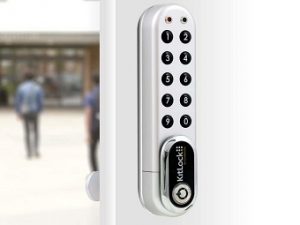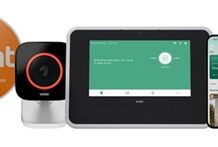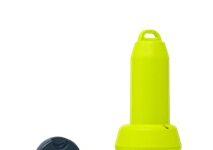
Codelocks Inc., an access control company that designs and distributes innovative, keyless door locks and access solutions, has announced the availability of its new KitLock, the KL1000 G3 NetCode. The new locker lock combines the style and functionality of the popular KL1000 G3 KitLock with the convenience of Codelocks’ NetCode technology, enabling administrators to generate temporary date- and time-sensitive access codes.
The KL1000 G3 NetCode can be set up to provide either short- or long-term access for users and includes all the features introduced with the KL1000 G3, including a key override function, easy access to the battery compartment, and the option to include Slam Latch for fast ‘push shut’ closure.
However, this new addition to the KitLock by Codelocks range boasts Codelocks’ NetCode technology. The NetCode Function enables lock administrators to generate a single-use code via the online Codelocks Connect Portal or by utilising the Codelocks Connect Application Programming Interface.
“Perfect for environments where cabinets and lockers may be used for multi-use occupancy or by an individual student or employee, the KL1000 G3 NetCode allows our customers to generate temporary codes remotely,” said Matt Welty, Vice President, Americas at Codelocks. “Those generated codes can then be sent by text or email, giving the recipient access to the locker on a specified date and for a set period.”
Private and Public Functions make it ideal for schools, offices, and gyms where lockers may be allocated on either short- or long-term basis. The NetCode Function also makes it easy for visiting service technicians, delivery personnel, and venues where staff might want to grant short-term access via a simple text or email.
KL1000 G3 NetCode has a modern chrome effect finish that reflects the lock’s surroundings giving it a slimmer, subtle aesthetic. Customers can choose to add Clean by Codelocks, an optional antibacterial finish that protects against viruses, bacteria, and environmental toxins. The clear coating is highly effective at eliminating the SARS-CoV-2 coronavirus and can reduce bacterial growth by 99.96%*.











